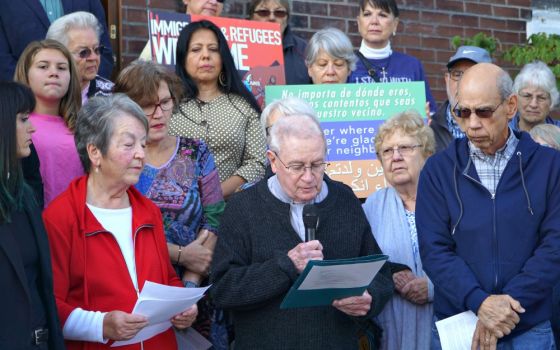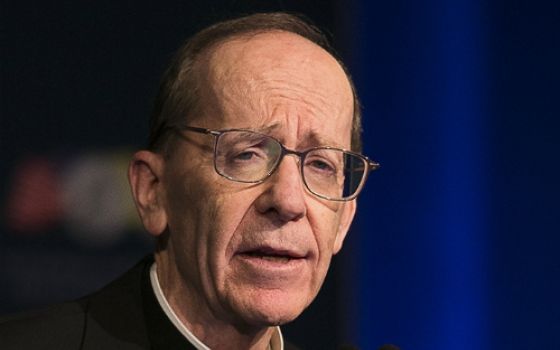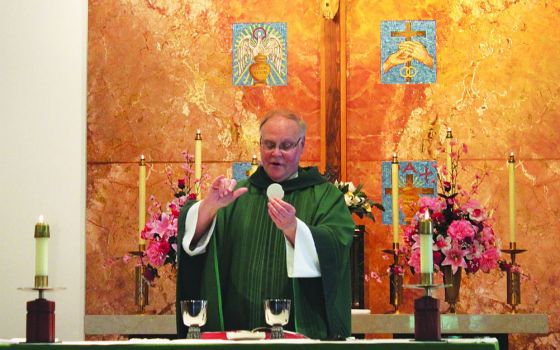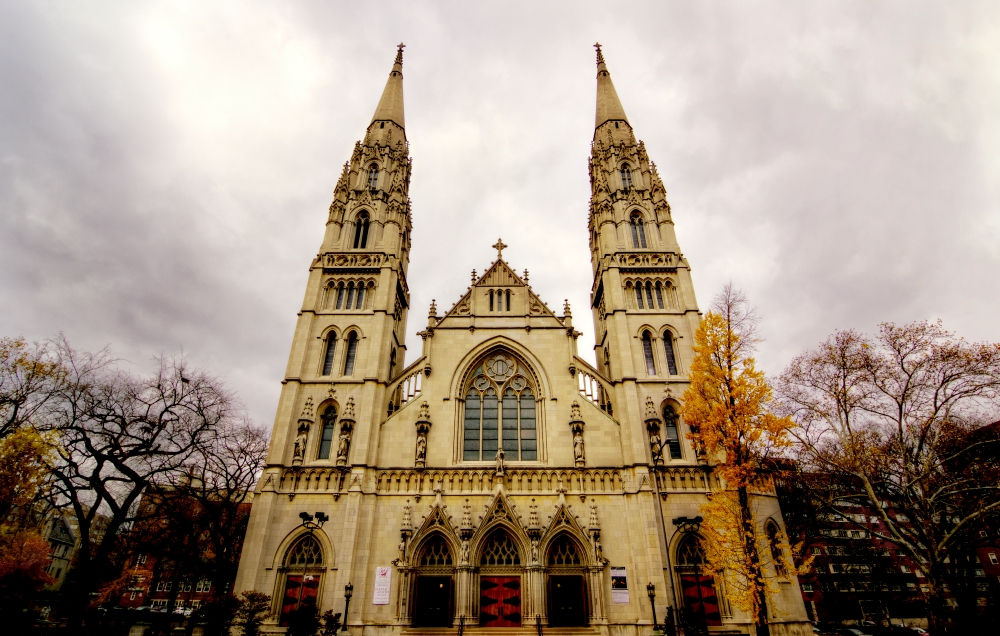
St. Paul Cathedral in Pittsburgh (Wikimedia Commons/Kiran Kulkarni)
There will be grief, but a new, more effective church outreach will emerge out of a massive planned consolidation in the Pittsburgh Diocese, diocesan spokesman Bob DeWitt told NCR.
He spoke after a diocesan planning commission, which includes DeWitt, recommended to Bishop David Zubik that the diocese arrange its 188 current parishes into 48 groups. The plan now goes to the bishop for a decision, which will take place after Easter 2018, with implementation to begin in the fall of that year.
While other archdioceses and dioceses in the Northeast and Midwest have closed and consolidated parishes in the past three decades, including Detroit, Philadelphia, Chicago, New York and Boston, and, most recently, Hartford, Connecticut, no diocese has undertaken such a massive change. The plan will reshape the concept of parish in the Pittsburgh Diocese's six counties.
The diocese needs to act boldly to deal with a decline in the number of priests and Catholics in the pews, said DeWitt.
"It's not just about reshuffling. It's about what we can do to reverse the trends," he said. DeWitt said the group, named the On Mission Commission, recommended the diocese move from keeping up church buildings built in prior centuries to meeting current needs, what he described as going from "maintenance to mission."
Statistics indicate a diocese reeling from an exodus of Catholics from formal religious practice in recent decades.
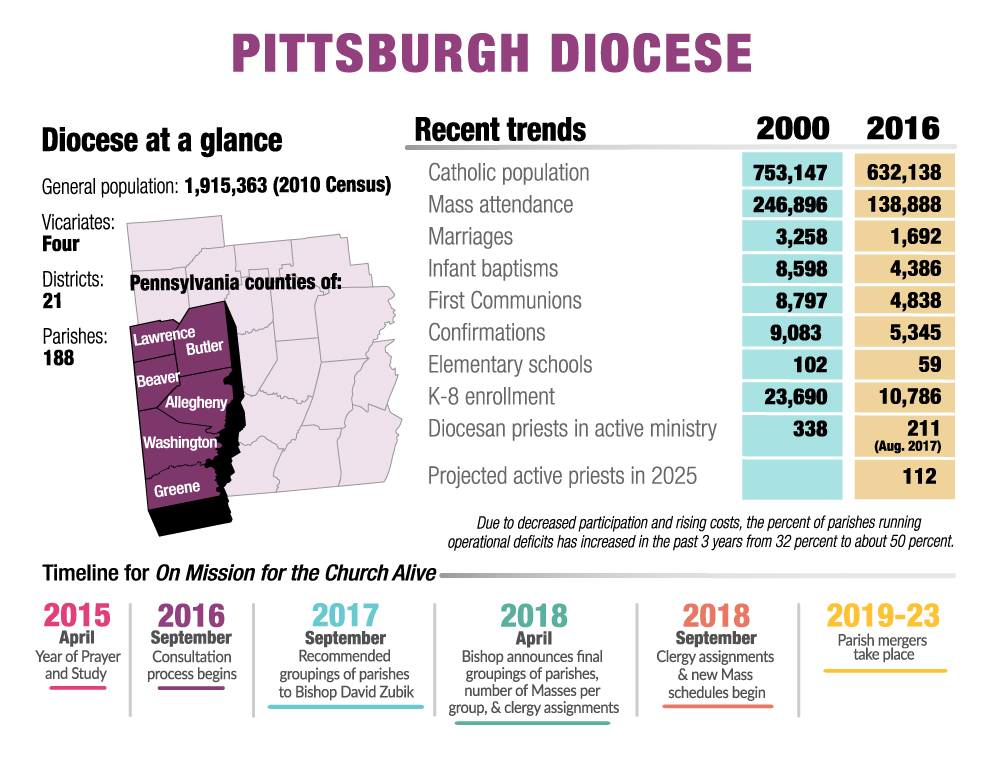
(NCR graphic/Toni-Ann Ortiz)
Catholic population has declined from 753,147 in 2000 to 632,138 today. In just 17 years, weekend Mass attendance has declined from 246,896 to 138,888. The number of marriages are down, 3,258 to 1,692, and infant baptisms, Catholic school students, and confirmation of young people are down by nearly half in this century.
Half of Pittsburgh's parishes experience operating deficits. The number of diocesan priests in active ministry has declined in this century from 338 to 211, and is projected to be at 112 by 2025.
While the diocesan territory's 1.9 million total population has been relatively stagnant as Western Pennsylvania continues to battle economic declines, DeWitt said the staggering losses in Catholic numbers cannot be attributed to a general population loss. The On Mission Commission concluded that managing decline was not a viable answer.
The proposed plan clusters parishes together. Each new parish grouping will be formed out of two to four existing parishes. The result, said DeWitt, will be larger parishes better-equipped to promote evangelization, particularly among the young.
The newly formed parishes will be better able to hire youth ministers and young adult ministers to reach a population that now are not practicing Catholics. Many of the existing church buildings will eventually be put up for sale.
The diocese was largely built around Eastern European, Italian and other ethnic groups who came to the region in the 19th and 20th centuries. They settled around factories and rivers. Many of those ethnic churches were closed back in the 1990s as Catholics resettled in suburban communities clustered around interstate highways.
There has been a recent return to the city of Pittsburgh by young people attracted by the prospect of affordable urban living, but relatively few of them connect to the church.
The changes outlined by the commission will come in stages via decisions made through a listening process begun in 2015, during which 27,000 Catholics offered input at meetings. Already, 10 parishes have expressed a need to merge, and they will go first, with the full impact of the plan throughout the diocese implemented by 2023.
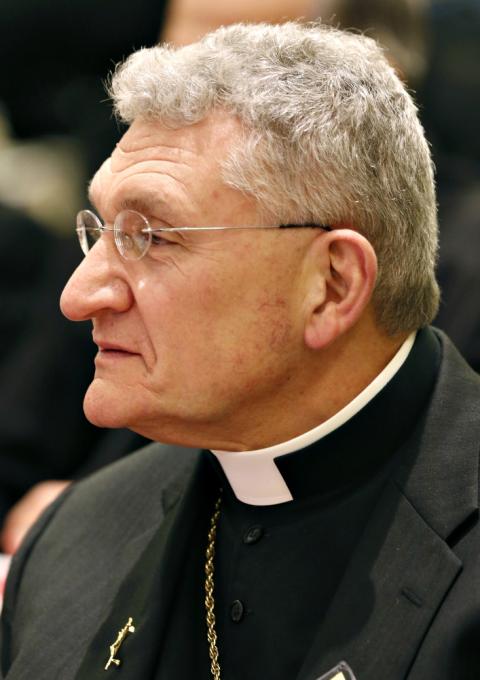
Bishop David Zubik of Pittsburgh (CNS/Bob Roller)
Holy Apostles Parish was recently formed out of four south-of-downtown Pittsburgh city parishes. The parishes now have a single pastor and share fundraisers and other projects.
"They are getting to know one another. They can do more outreach and have more people," said DeWitt about that merger.
DeWitt expects there to be resistance to the massive closing of churches. "These are sacred places. This is where people grew up in the faith," he said.
In the listening sessions, there emerged different views held by older and younger parishioners. Younger Catholics generally expressed a need for vibrant liturgies, and expressed a willingness to cross current parish boundaries to find lively music and preaching. Older parishioners were more likely to express a need to keep connections with the churches where they were raised.
The diocese currently has three parishes administered by deacons, with another parish that was administered by a religious sister. In those parishes, priests come in for sacramental duties. That model is expected to continue with the decline in the number of diocesan priests, said DeWitt. The diocese has been averaging about four priest ordinations each year.
Zubik is not bound by the commission's findings and may well revise some of its recommendations, said DeWitt. But the bishop is expected to use the commission's findings as a baseline for his final decisions.
Advertisement
[Peter Feuerherd is a correspondent for NCR's Field Hospital series on parish life and is a professor of journalism at St. John's University, New York.]
We can send you an email every time The Field Hospital is posted. Go to this page and follow directions: Email newsletter sign-up.





